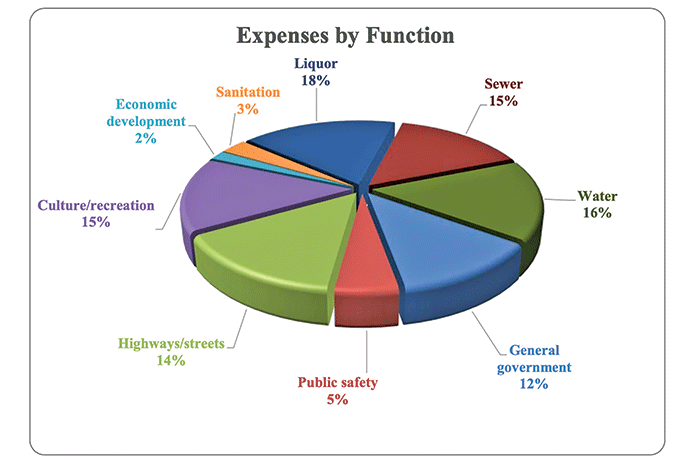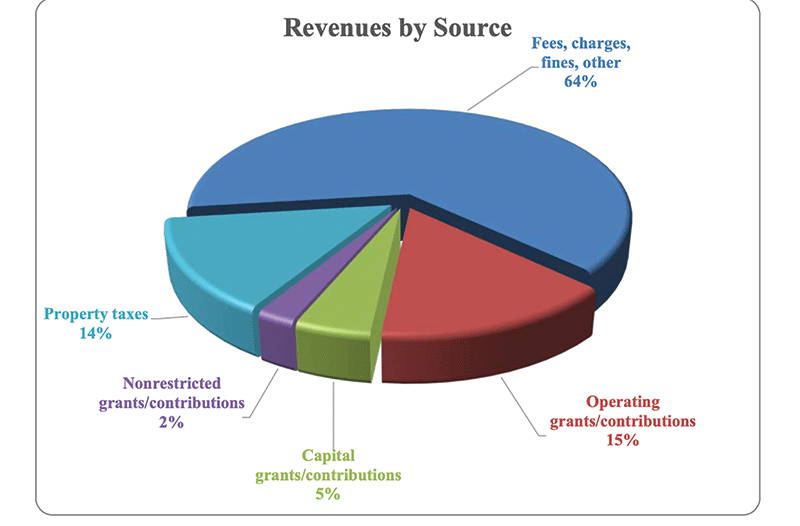Vergas liquor store banks $84,695 in 2020
News | Published on August 9, 2021 at 4:01pm EDT | Author: Chad Koenen
0Vergas Trail addition increases city’s net position
By Barbie Porter
Editor
The 2020 audit for the city of Vergas showed the liquor store posted a profit of $84,695.
In recent years, the city has remodeled the municipal liquor store, enhanced the sign and provided a variety of competitively priced products. The competitive drive has not went unnoticed as it continues to turn a profit for the city.
In 2020 there was $30,000 transferred out of the liquor store fund into the city coffers. Those funds help keep it’s property taxes down or help the city fund other necessary projects.
Auditor Colleen Hoffman was also excited to hear the liquor store had hired a manager. For some time, City Clerk Julie Lammers has taken on those duties.
Hoffman said Lammers has the abilities to successfully run the off-sale and city. However, she added two full time jobs are a lot to take on for one person. With a manager fully dedicated to the store, Hoffman believes the business will thrive.
The audit stated the liquor store in a town of about 360 people posted sales of $736,331. The costs of goods sold was $532,594, bringing the gross profit to $203,737.
Operating expenses for the off-sale totaled $121,484. The top three expenses were: personnel, $54,343; supplies, $16,083 and depreciation, $15,145.
Subtracting the gross profit from expense brought an operating income of $82,253. Non operating revenues brought in an additional $2,442 to bring the profit before transfers to $84,695.
There was $5,203 transferred into the liquor fund and then $30,000 removed and placed in the city coffers.
The net position of the store began 2020 with $618,295 and at the end of the year was at $678,193.
Sewer and water
close 2020 with a loss
The proprietary funds of the sewer and water need to be self sustaining. The audit showed there was a loss taken in both accounts for the year 2020.
The sewer fund posted operating revenues of $92,434.
Expenses for the sewer fund totaled $99,467 with the top three expenditures being: personnel, $58,907; repairs and maintenance, $18,103 and utilities, $7,648.
Once the expenses were removed from the gross profit, the sewer fund was operating at a loss of $7,033. There were non-operative expenses totaling $1,784, increasing the total loss on the year to $8,817.
The sewer fund started 2020 with $160,114 and closed the year with $151,297.
The water fund saw a similar pattern to that of the sewer fund. The water enterprise posted revenues of $103,695 for 2020.
Expenses totaled $108,732 with the top three expenditures being personnel, $59,205; depreciation, $29,409 and repairs and maintenance, $7,691.
After the expenses were removed from revenues, the operating loss was $5,037. There was $444 in non-operating expenses to bring the total loss on the year to $5,481.
The water fund started 2020 with $686,536 and ended the year with $681,055.
Annual budget reviewed
Every year the city council sets a budget. The end of the year audit shows how close they came to the projected expenses. For 2020, they brought in $386,646 more than expected and spent $477,208 more than anticipated.
The numbers may seem jarring on paper, but when looking at revenues consider the city received fund assistance from the federal government through the CARES Act, which was put in place for aid to municipalities and others during the pandemic.
When considering expenses, keep in mind the city completed the floating boardwalk. The audit stated the additional $477,208 expenditure was “primarily as a result of the unbudgeted Vergas Trail Project.”
After the council meeting, Lammers was asked of the true cost to the city for the trail addition. She explained $23,729 was paid for by the city to cover engineering costs. The remaining amount was paid through reimbursement grants and fundraising efforts from the trail committee.
The budgeted revenue was $366,659 and the actual amount received was $753,305. The top three revenue generators for the city were property taxes, intergovernmental aid and miscellaneous.
The projected tax revenue at the start of 2020 was $228,179. The city was very close on the actual property tax revenue, which came in $1,285 above the estimate.
The intergovernmental aid the city expected at the beginning of year was $48,450. Smaller municipalities receive local government aid to assist with the expense of running a government, which was what the projected intergovernmental aid represented. The actual amount of intergovernmental aid Vergas received totaled $316,116. The jump was due to the increased assistance through the CARES Act funding.

Colleen Hoffman recently explained and reviewed the city audit to the Vergas City Council.
The third top revenue generator for Vergas in 2020 was in the miscellaneous file. While the city estimated $29,000 to be generated here, $164,923 was brought in.
Expenditures were broken into categories in the annual budget and audit. Those categories were:
• General government, which included mayor and council pay, legal fees and more. The total general government expense projected at the start of the year was $80,880. The end of the year, the actual expense was $1,952 over budget. The top three expenditures were city clerk/treasurer, $28,616; administration, $24,573 and other general government, $9,681.
• Public safety includes fire and the fire relief association. The category had a projected budget of $23,400. At the end of the year, the amount spent in this category was $33,885 with the additional expenditure attributed to the fire relief association.
• Highways and streets includes personnel, snow removal, street lighting and more. The category started the year with a budget of $113,820. It closed the year $46,917 under budget. The majority of the savings were attributed to the street department costs, which were projected to be $94,620 and actually cost $52,707.
• Sanitation recycling center offers city residents the opportunity to dispose of yard waste and recyclable items and those outside the city limits the option of purchasing a permit to utilize the facility. The city budgeted $7,515 for the category and came in $4,319 over budget.
• Culture and recreation includes parks, the event center, trails and recreational programs. The category had a budget of $103,024 to start 2020 and ended the year $8,157 under budget. The savings were attributed to funds earmarked for the event center and recreational programs.
• Debt Service accounted for an unbudgeted $17,562 reduction.
• Capital outlay anticipated $32,000 in expenses and saw $529,964 spent. The funds were set aside for the floating boardwalk that extended the Vergas Long Lake Trail, so while not budgeted it was anticipated.
After receiving two $15,000 transfers from the liquor store, although only one was anticipated, the fund balance closed the year at $179,917.
Hoffmann complimented the Vergas City employees for providing accurate documentation to make the annual audit and easy one.
Overall, the total net position of the government activities increased by $454,715 for 2020, she said. Hoffmann noted the increase was attributed mainly to grants received for the Long Lake Trail project.
Three findings made in audit
The annual audit consistently has two findings in most smaller municipalities, school districts and some counties. The findings of segregation of duties and internal controls are marked because employees often wear multiple hats. To correct the findings would mean hiring additional people, and the expense may not be justified to remove the common marks on the audit.
The city was also marked for accounting and financial reporting for pensions, something it has seen in the findings since 2015. Hoffmann explained the mark is because the city fire relief association has not undergone and actuarial study to determine its net pension liability/asset.



